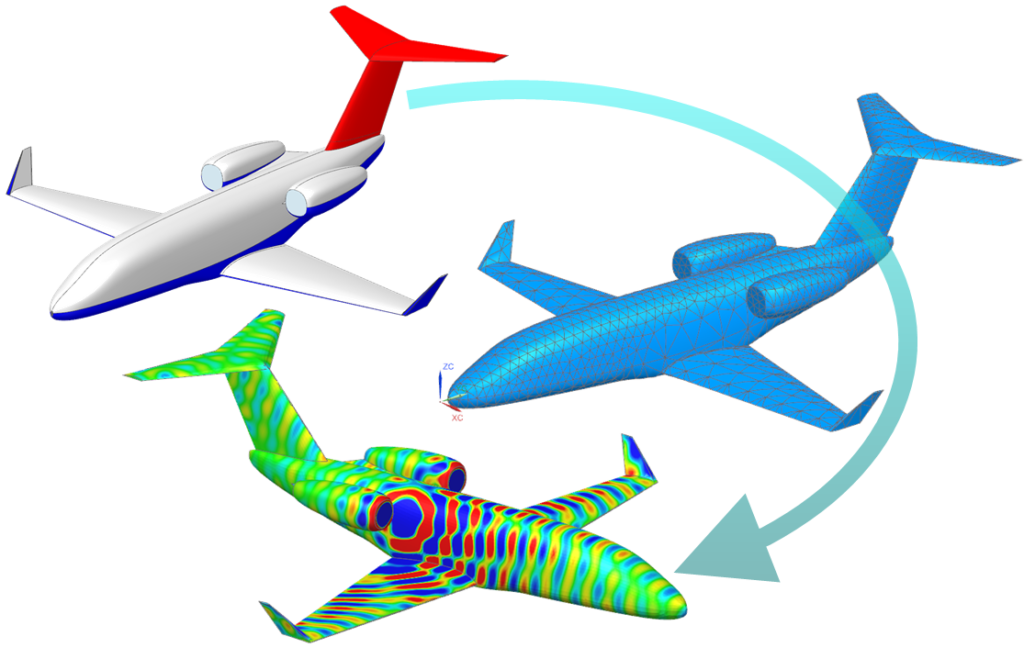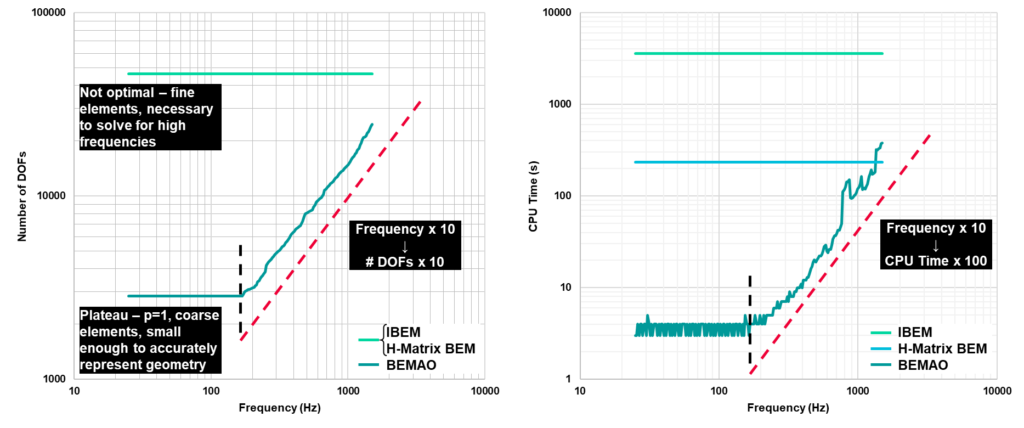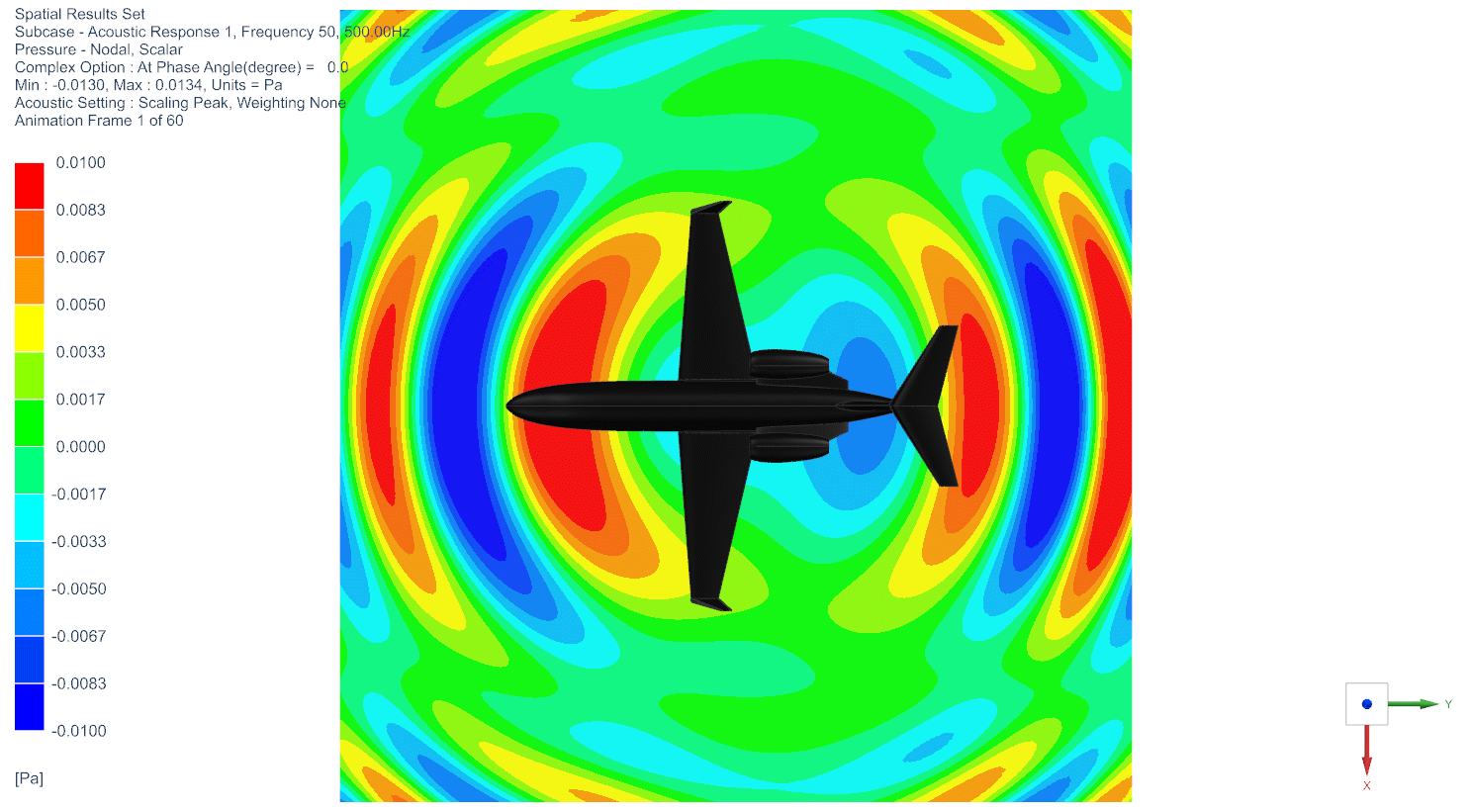BEMAO: efficient and accurate broadband acoustic simulation

Simcenter 3D includes a wide range of acoustic simulation technologies. In this blog, we present you the Boundary Element Method with Adaptive Order (BEMAO), a method that is particularly useful to simulate free-field acoustic radiation for large geometries over a wide frequency range.
Standard acoustic simulation
Acoustic simulation has been a part of standard product engineering since decades. The available technologies are all well known, very accurate, and mature. For low and mid-frequency, they are all variations of the finite element method (FEM) and the boundary element method (BEM). Which one to choose, depends on several factors. Under certain conditions, a FEM model suits better. When the fluid in which the sound propagates is non-uniform, for instance, FEM will be the method of choice. Also, for some physical systems, BEM would lead to smaller but denser equation systems compared to the larger but sparser system matrices in FEM. But if there are no specific reasons to call for FEM, BEM is definitely a good and popular choice, especially as it presents some advantages.
Especially model preparation is easier in BEM. As opposed to FEM, BEM only requires a surface mesh on the geometric boundaries (see figure 1). In addition, BEM does not require ad-hoc treatment for exterior acoustics radiation of unbounded domains, as the Sommerfeld radiation condition is directly handled through the formulation. So, altogether, BEM is generally a more elegant option for free-field acoustic radiation analysis. One aspect, however, made many engineers scratch their heads. The computational requirements of BEM grow exponentially with the model size, which in its turn has to be larger for higher frequencies. For several applications, BEM had to be complemented with other technologies to cover the full audible range.

Dealing with large model sizes
Growing model size became definitely problematic for applications with larger geometries, such as automotive pass-by noise or aircraft landing noise analyses. Today however, there are solutions for those. First of all, we now have obviously much more powerful computers available than, say, 10 years ago. But at the same time, several new methods have been developed, for both BEM and FEM, specifically to address these larger problems in an efficient way.
One opportunity to maximize efficiency, is to make sure you use the right mesh size in each calculation. This must be fine enough to correctly describe all physical information. But on the other hand, it must also be coarse enough to avoid longer calculation times without accuracy gain. The difficulty here is that a BEM solver calculates frequency line per frequency line. And since the required mesh size and the frequency of interest are related (6 elements per acoustic wavelength are required), there are two main options if you want to calculate a complete spectrum. Either you use one single mesh with a model size based on the maximum frequency, which makes calculations for all lower frequencies unnecessarily expensive. Or you use multiple meshes for various frequency bands, which then complicates the setup and impacts preparation time. None of these options are ideal.
Presenting the Boundary Element Method with Adaptive Order (BEMAO)
In Simcenter 3D Acoustics however, we present you a third option. BEMAO provides engineers with an elegant way to automatically adapt the necessary model size to the calculation frequency. Like this, they can win calculation time for the lower frequencies without adding hands-on time for model preparation.
BEMAO is based on using high-order polynomial shape functions in the discretization of the indirect BEM formulation. When applying this technology, you can work with coarser meshes and rely on higher orders for appropriate field approximation. The second key point is the automatic order adaptation within each element of the surface mesh. This means, the solver choses the order based on an a-priori error estimator at each frequency, which guarantees both sufficient accuracy and best performance.
In practice, the only things engineers need to input, are a single coarse mesh and a desired accuracy. An ideal model size is hence obtained for each frequency. This method allows to perform broadband acoustics analysis at optimal performance, for the full frequency range, and with minimum user intervention.

BEMAO performance
Compared with other BEM solvers (classic indirect BEM and the more advanced H-Matrix BEM, which uses low-rank approximation to reformulate the original BEM problem into something numerically more interesting), we observed that:
- For lower frequencies: BEMAO solves orders of magnitude faster thanks to the combination of a coarse mesh with a low element order, yielding a very efficient prediction model.
- For higher frequencies: BEMAO is still more efficient, with the solving time being factors lower than standard BEM.
- At the maximum frequency: BEMAO compares well with H-Matrix BEM with an equivalent computational time.

Examples
Curious about finding out more on applications where BEMAO could shine and make a difference? See the following pictures (figures 4 to 7) of classical industry challenges.




Summary
BEMAO is an exciting technology, new in Simcenter 3D Acoustics. Using this method, engineers can cover a wide frequency range efficiently with one single model. This one can be coarse enough to save time at lower frequencies and will maintain precision when moving up in frequency by automatically adapting the element order on the acoustic mesh.
BEMAO is available in Simcenter 3D 2022.1
Related blogs
Did you think this was interesting to read? Then maybe you will also like the following blogs:
Efficient and Accurate Broadband FEM-based Vibro-acoustics (Part 1)
Efficient and Accurate Broadband FEM-based Vibro-acoustics (Part 2) – External Acoustics


